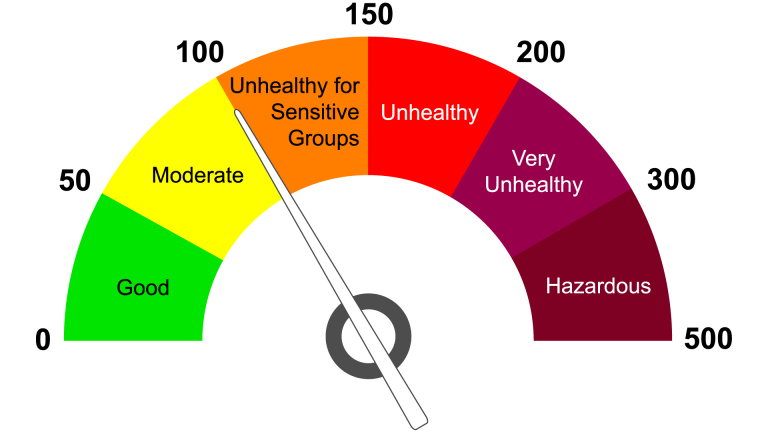As smoke from Canadian wildfires creeps south, the government is monitoring air quality using a color-coded index.
NEW YORK (AP) — How can you check your local air quality, and what do the figures mean?
The EPA monitors the air quality across the country and generates an air quality index, or AQI.
Here’s what you need to know about the index and how to monitor it in your location, particularly in areas of the United States coping with smoke from Canadian wildfires.
HOW DOES THE AIR QUALITY INDEX WORK?
Every day, the index determines how clean or filthy the air is. The EPA used this metric to monitor five types of air contaminants. Fine particle pollution, or PM2.5, is the greatest problem from wildfire smoke. These particles are small enough to enter the lungs. They can cause short-term difficulties like coughing and eye irritation, but they can also harm the lungs and heart in the long run.
WHAT DO THE COLOURS AND NUMBERS MEAN?
The index ranges from 0 to 500. The greater the number, the poorer the quality of the air. This range is divided into six color-coded groups. The air is either green or yellow — in the zero to 100 range. When it reaches orange, the air quality may become a worry for vulnerable groups such as children, the elderly, and individuals with medical issues.
The air quality is rated unhealthy for everyone in the red and purple zones. And once it reaches maroon 301 or higher pollution levels are dangerous.
Take care to prevent breathing in hazardous air at these high levels. This might include limiting your outside activities, running air purifiers indoors, and wearing a well-fitting mask, such as an N95, when you’re outside.
If you must exert yourself, do it in moderation. “Hydrate more,” advises Dr. Leonardo Trasande, an environmental health researcher at New York University.
WHAT IS THE QUALITY OF THE AIR IN MY AREA?
Check out AirNow.gov, which is updated hourly. The website displays a real-time map of air quality around the country as well as a forecast for the day ahead. The map incorporates data from a nationwide network of air monitoring stations. States and municipalities may also provide further local guidelines.

